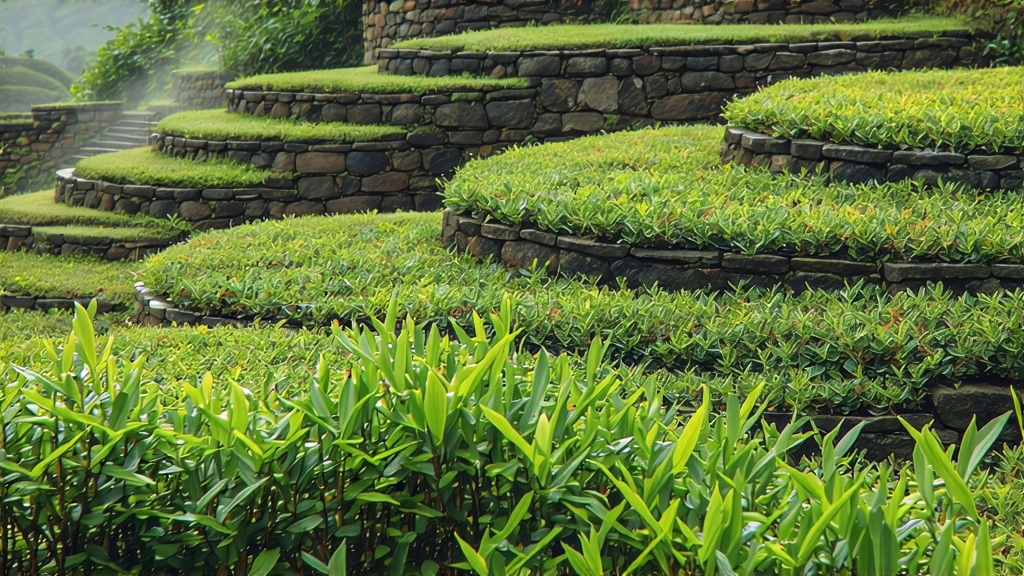
High among the cloud-veiled ridges of Ya’an, Sichuan, the legendary Mengding Mountain has been sending the first spring tea to Chinese emperors for more than twelve centuries. Of all the gifts that left this misty summit, none was more coveted than Mengding Huangya—Mengding Yellow Bud—a tea so delicate that Tang-dynasty poets called it “the liquid silk of heaven.” Today, outside a small circle of connoisseurs, it remains almost unknown, overshadowed by green tea cousins such as Longjing or Biluochun. Yet within the tiny yellow-tea family, Mengding Huangya stands as the most aristocratic leaf, the only one ever listed exclusively in the imperial tribute registers of both Tang and Song courts. To understand it is to glimpse a lost chapter of Chinese tea artistry, a craft that survives only because a handful of families still wake before the mountain bells to repeat gestures their ancestors perfected during the reign of Xuanzong (712–756 CE).
History: From Palace Secret to Endangered Treasure
The first written record appears in 753 CE, when the monk Wu Lizhen planted seven tea bushes on the summit of Mengding, an area Buddhists considered the threshold between earth and sky. By 805 CE the Daoist abbot of the same temple presented “yellow buds picked before Qingming” to Emperor Dezong; the court was so moved that annual tribute was decreed, a duty that continued uninterrupted until the fall of the Qing in 1911. Because yellow tea was never exported in bulk—unlike black or green tea—European tea merchants never catalogued it, and so it slipped into obscurity. When China’s tea industry was nationalised in the 1950s, state farms prioritised volume; the labour-intensive yellowing process was simplified or skipped entirely. By 1980 fewer than 30 kg of authentic Mengding Huangya were produced annually. Revival began in 1983 when the Sichuan Tea Institute persuaded three elderly masters to reconstruct the original technique; even now, annual production rarely exceeds 800 kg, most of which is pre-sold to collectors in Beijing, Shanghai and Tokyo.
Micro-terroir: Where Clouds Polish the Bud
Mengding Mountain rises to 1 456 m, pushing the tea gardens into a belt of perpetual cloud. The dew that forms at night is so heavy that farmers call it “heaven’s wet towel,” keeping the buds turgid and slowing photosynthesis. The result is an unusually high ratio of theanine to catechins, giving the tea its signature sweet brothiness. The soil is a crumbly yellow loam rich in illite clay, which traps morning moisture yet drains quickly—perfect for the local cultivar “Mengding Zao,” a varietal that germinates two weeks earlier than Sichuan’s standard tea bushes. Because the mountain is a protected heritage zone, no agrochemicals are allowed; instead, rows of cedars are planted as windbreaks, their fallen needles adding a faint resinous note to the leaf.
Plucking: One Bud, One Dawn, One Breath
The picking window opens five days before Qingming (around 4 April) and closes exactly ten days later. Only the unopened bud, still sheathed in its pale down, is taken—never the first leaf. A skilled picker can gather just 200 g in an hour; 60 000 buds are needed for one kilogram of finished tea. The harvest must reach the village courtyard by 9 a.m.; after that, mountain temperatures rise and enzymatic activity accelerates, making precise yellowing impossible.
Craft: The Secret of Men Huang—Sealed Yellowing
What transforms a green bud into yellow tea is the step called men huang, literally “sealing yellow.” Within two hours of plucking, the buds are wok-fired at 160 °C for exactly 90 seconds; this kills the grass-green enzymes but leaves a whisper of moisture inside the bud. The still-warm leaves are then wrapped in stacks of steamed bamboo paper, pressed gently into a cedar box, and left to breathe in 28 °C darkness for 70 minutes. During this sealed rest, the residual moisture migrates outward, re-activating non-enzymatic oxidation that turns chlorophyll into pheophytin and converts harsh catechins into softer theaflavins—chemistry that gives the liquor its luminous apricot hue. The cycle—quick re-firing, re-wrapping, re-resting—is